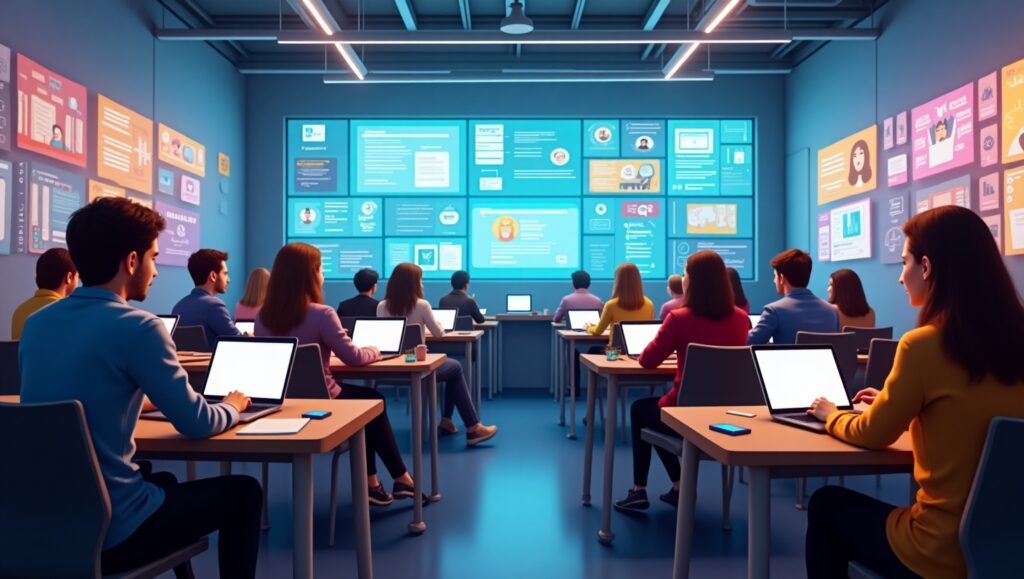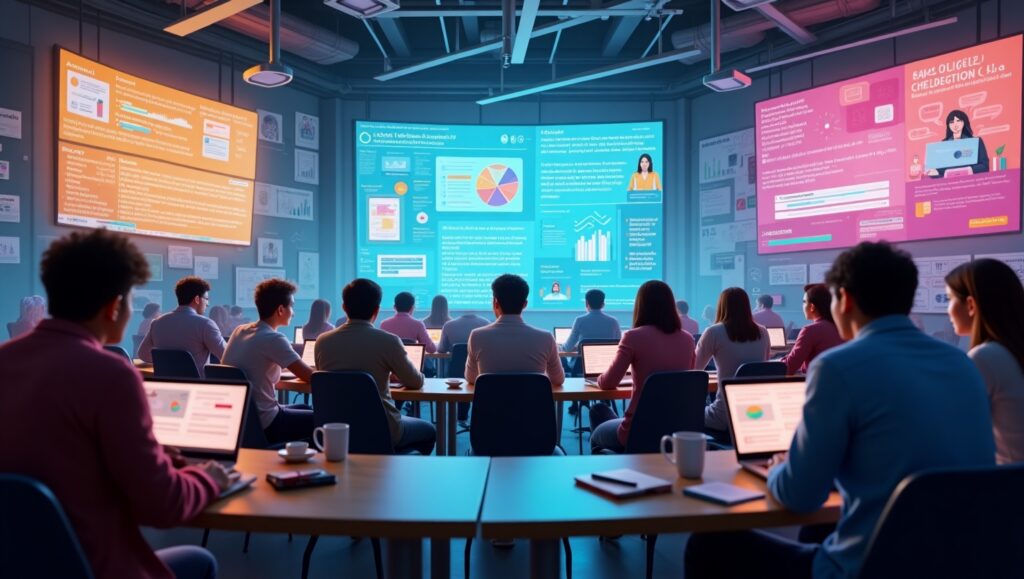Augmented Reality (AR) and Virtual Reality (VR) are technologies that bridge the gap between theoretical knowledge and practical application, enhancing student engagement and comprehension.

Learning that is Engaging and Interactive
With the focus on text and videos, traditional online education can come across as passive. AR and VR bring interactive experiences, allowing students to engage with topics practically. VR simulations enable learners to conduct virtual science experiments or explore historical locations in 3D, making instruction more dynamic and effective.
Immersion-Based Learning Settings
With the help of virtual reality (VR), students may interact with other learners, visit virtual classrooms, and manipulate 3D models of challenging subjects. AR helps pupils visualize abstract ideas by incorporating digital features onto actual items. To improve their learning, medical students, for example, can investigate interactive 3D anatomical models.
Overcoming Geographical Challenges
While online learning overcomes limitations of traditional classroom settings, AR and VR enhance the depth of distant learning. Through collaborative workspaces, real-time simulations, and virtual field trips, students can engage in an international learning environment where distance is no longer a problem.
Practical Uses in Various Fields
AR and VR are transforming a number of academic disciplines.
Medical Training:
Students can practice surgery in a risk-free environment with virtual reality (VR), which increases accuracy.
Engineering and buildings:
Students can better comprehend architectural designs and machine structures by using 3D representations.
History & Geography:
Students can visit historical sites and ancient civilizations through virtual field trips.
Language Learning:
By modeling real-world talks, virtual reality models help users become more fluent.
Despite their benefits, AR and VR face challenges like high costs, accessibility issues, and equipment requirements.

Final Thoughts
By giving students useful skills that improve their educational experiences, these technologies are affecting the direction of education in the future. AR and VR will become vital resources in the field of education as progress develops.

With more than 20 years of experience in higher education leadership, Ruth E Lugo has held prominent academic positions at a variety of institutions, concentrating on key areas such as student learning, faculty development, curriculum design, and institutional accreditation. As the Team Chair for eleven accreditation evaluations with the Middle States Commission on Higher Education, she has successfully directed thorough assessments that uphold academic standards and regulatory requirements. Furthermore, Ruth has provided consulting services to major international institutions, offering guidance on accreditation processes, strategic planning, and governance frameworks. Her extensive knowledge in assessment, budget management, and collective bargaining, combined with her commitment to academic excellence and institutional effectiveness, make Ruth E Lugo a passionate champion for shared governance in higher education.
